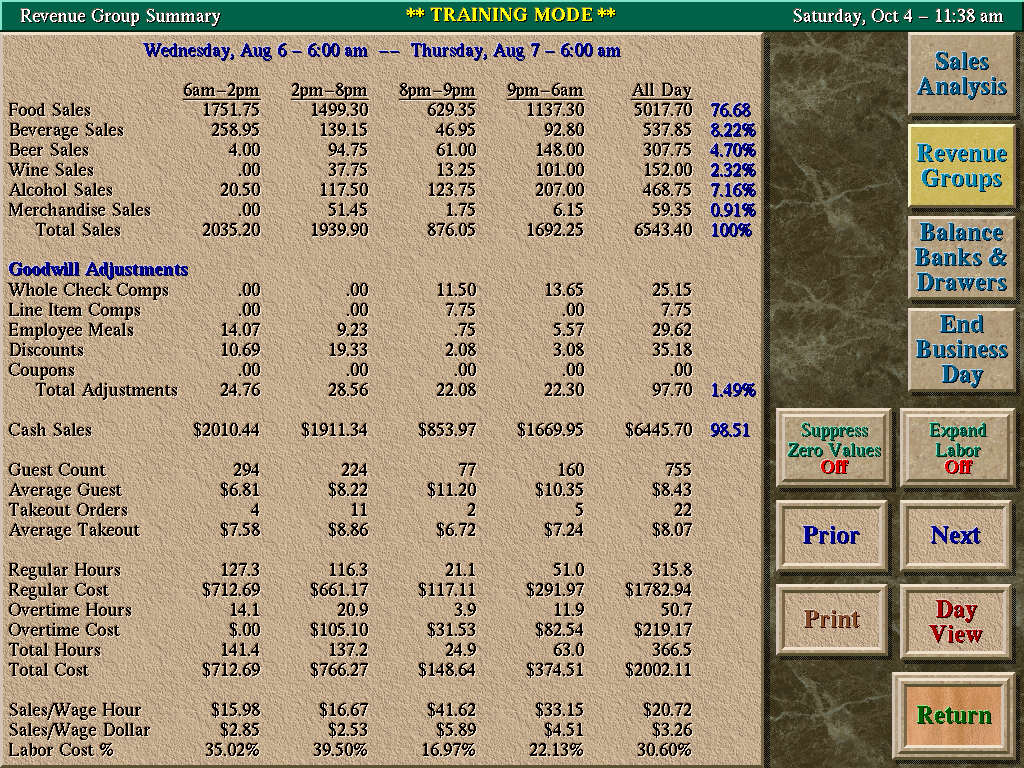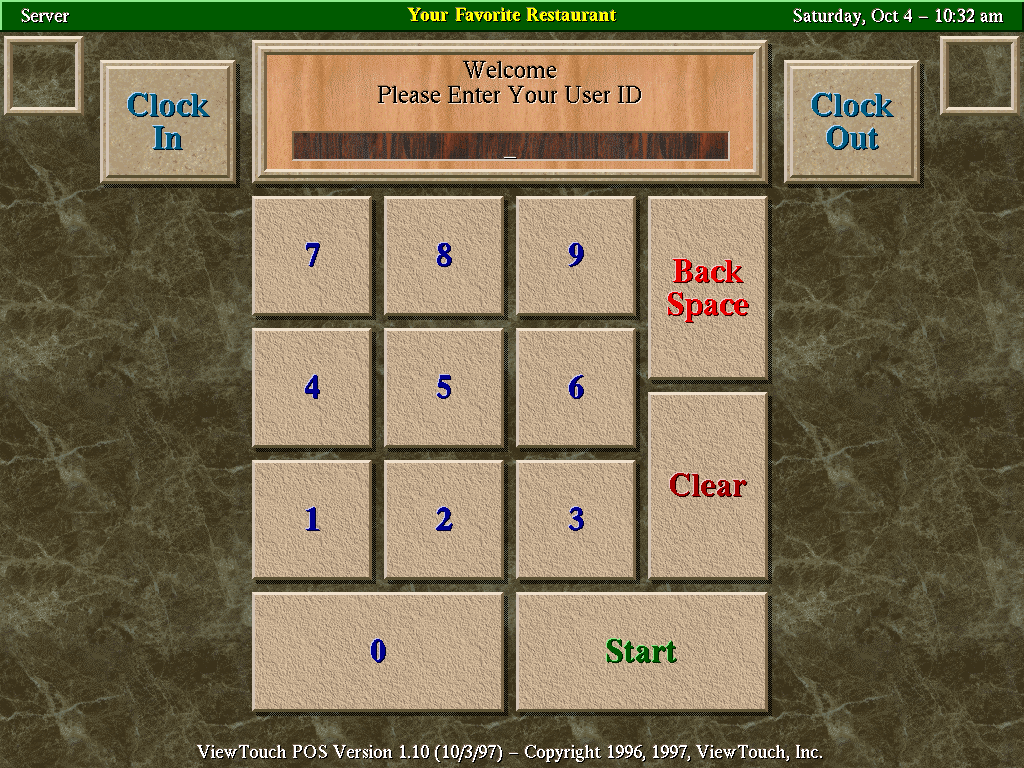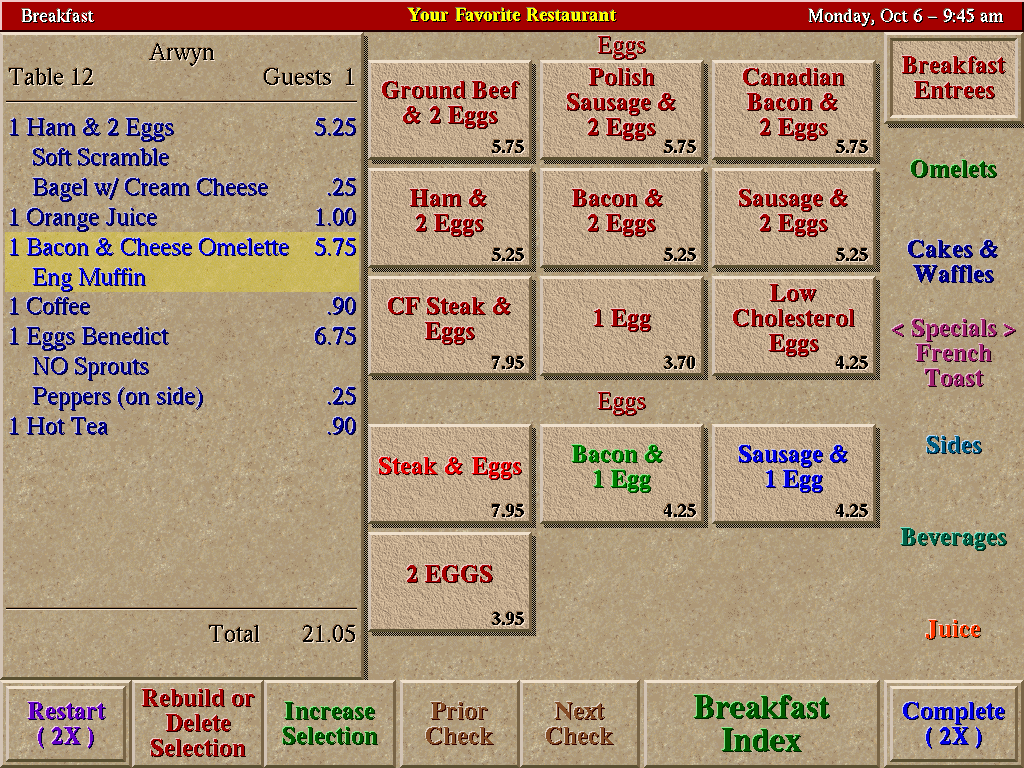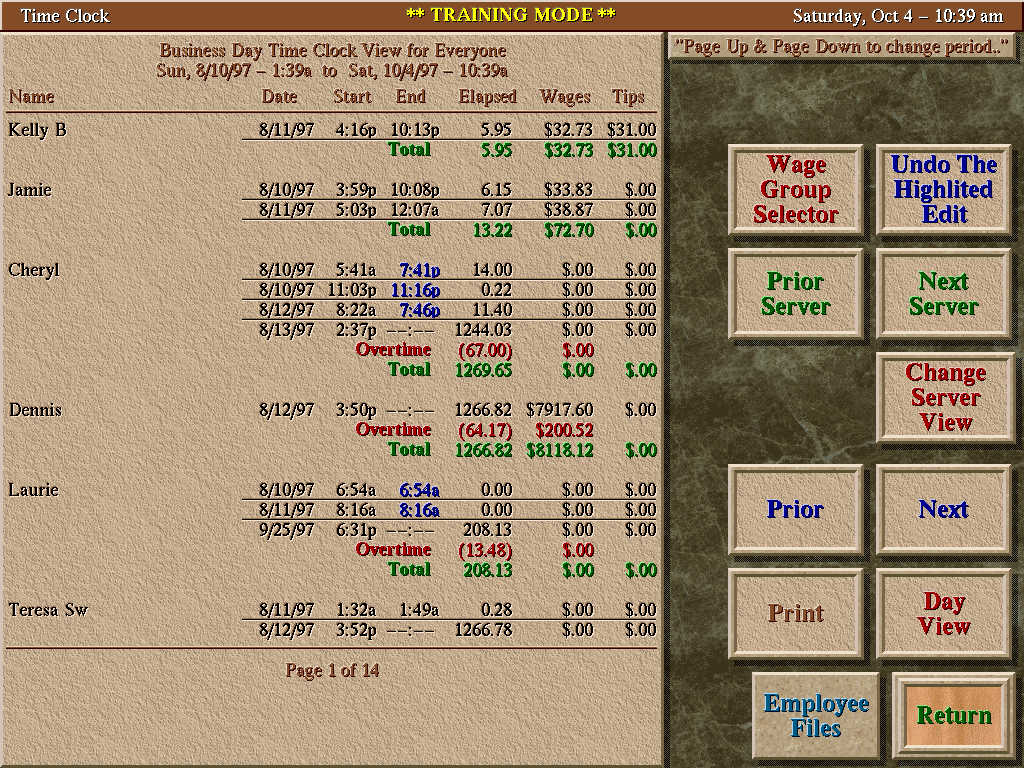ViewTouch is a registered trademark in the USA.
ViewTouch is the ORIGINAL Graphical Touchscreen Restaurant Point of Sale Interface, first created by restaurateur Gene Mosher and C programmer, Nick Colley, in 1986. Initial funding of the development of the code in '86 was due to the effort of Ed Ramsay. ViewTouch was first demonstrated to the public at ComDex, Las Vegas in November, 1986. https://commons.wikimedia.org/wiki/File:Comdex_1986.png The current version of ViewTouch was first created in 1995-98 by Gene Mosher and C Programmer, Richard Bradley. Major funding of the development of the code during the '95-'98 period is due to the effort of Billy Foster. Extensive enhancement of the code was carried out from 2000-04 by Bruce King. Major funding of the development of the code during the '00-'04 period is due to the effort of Doug DeLeeuw. Since the arrival of ViewTouch under the GNU Public License in 2014 ViewTouch code has been available at GitHub and a great deal of refinement and modernization of the code has taken place. Gene and Barbara Mosher have provided lifetime support and funding for ViewTouch; Gene owns the ViewTouch copyright and has overseen the management of the code during its entire lifetime.
With the availability of ViewTouch source code under the GPL and the arrival of the Raspberry Pi Foundation's computers a restaurateur can automate one's own restaurant at virtually NO EXPENSE! Android tablets can be used as X terminals by downloading the ViewTouch Android X Server at http://viewtouch.com/download.html The most recent ViewTouch Raspberry Pi image is also available at this link.
The availability of ViewTouch source code and documentation at GitHub is twofold: it benefits the clients, customers and associates of Gene Mosher and it facilitates the free development and maintenance of ViewTouch source code.
An important link at the top of this page is the Wiki link. It contains a page with build instructions and an 'Announcements' page with the latest news.
Restaurateurs who are clients or customers of ViewTouch and who wish training and 24/7 support need only contact Gene at http://www.viewtouch.com/contact.html
Official website: http://www.viewtouch.com
ViewTouch is released under the GNU Public License, version 3.
The ViewTouch website and contact point is http://www.viewtouch.com Email: [email protected] Phone: 541-515-5913
These screenshots are in 1280 x 1024 resolution, however, default graphical resolution is 1920 x 1080.
Order Breakfast, then Display and/or Print in Kitchen
A Lightning Fast, High Resolution Interface
Time Clock Review and Edit - Control Labor Expense
Back Office, Comprehensive Labor Costing, Overtime Alerts
Interactive Time Clock Review and Editing
Decision Support: Fly-Over, Drill-Down in Real Time
Touch 'n' View Any Day or Any Period Updated Every Minute

ViewTouch first ran as a C program on the Atari ST computers in 1986. The Atari ST was a very exciting platform under Jack Tramiel from 1985 until 1993/4. In 1995 development of ViewTouch under UNIX began. At that time we were using Power Computing (i.e., Power PC) computers manufactured by The Computer Group at Motorola and the operating system was IBM's version of UNIX, (AIX). In 1997, when Steve Jobs returned to Apple, the first thing he did was to kill the clones and to do that he bought PowerComputing outright to stop what he perceived as sales cannibalization of Apple-branded models. That was the end of the PowerPC at Motorola. When computer manufacturer Atari died, in 1993, if one didn't want to use Microsoft DOS or Apple computers, UNIX was one's only choice, and MIT's X Window System was the only practical choice with which one could build tools which could then be used to create a graphical interface. This is precisely the decision which was made for ViewTouch in early 1995. In 1997 the decision was made to move from AIX on the PowerPC to the Red Hat Linux distribution on Intel's X86 platform. In 2000 the decision was made to begin a transition from C to C++ and from the Red Hat to Debian. ViewTouch remains on Debian as the default distribution today, featuring the XFCE desktop environments. Since 2016 the default hardware platform for Viewtouch is the family of Raspberry Pi computers. ViewTouch production POS computers provide all the files necessary to compile the latest GitHub version of the code. ViewTouch Point of Sale isn't just about the advantage of the power of Linux; it's also about the advantage of the remote display capability of The X Window System. To add display terminals one doesn't need to replicate either the program or data. One only needs to open additional user display terminals by adding their IP addresses to the ViewTouch display configuration page.
The ViewTouch GUI has the Monetra Credit/Debit Card Verification engine integrated into it and can be used with virtually any payment processor. Visit the Monetra web site to see the certifications and the site licenses charges, which are quite reasonable, and the role they play in all this. ViewTouch does not have to play with any payment gateway at all - it's 100% optional.
ViewTouch looks exactly the same on any Android tablet as it does on any display monitor, regardless of the resolution. The Android X Server we use is based on XSDL, which handles that transformation and much thanks to Sergii Pylypenko, of Kiev, for all of this!




